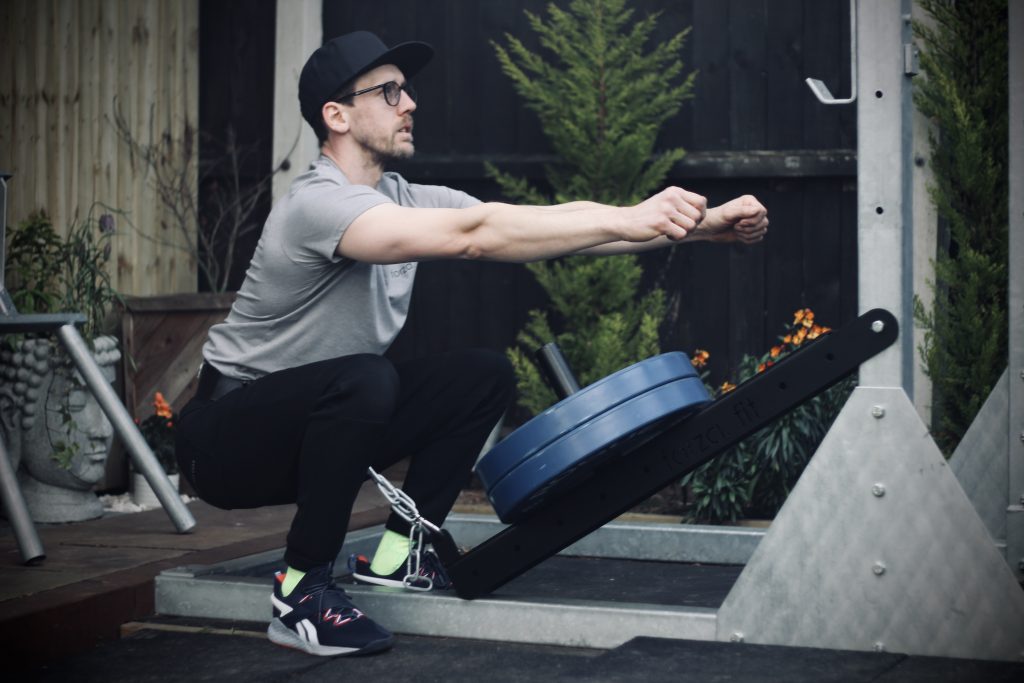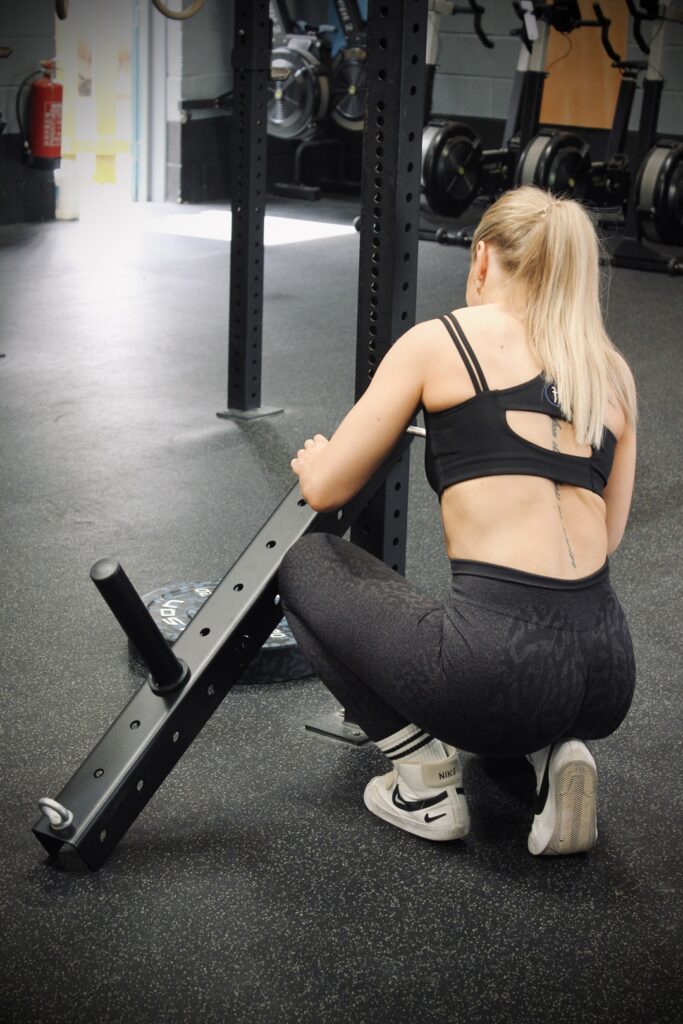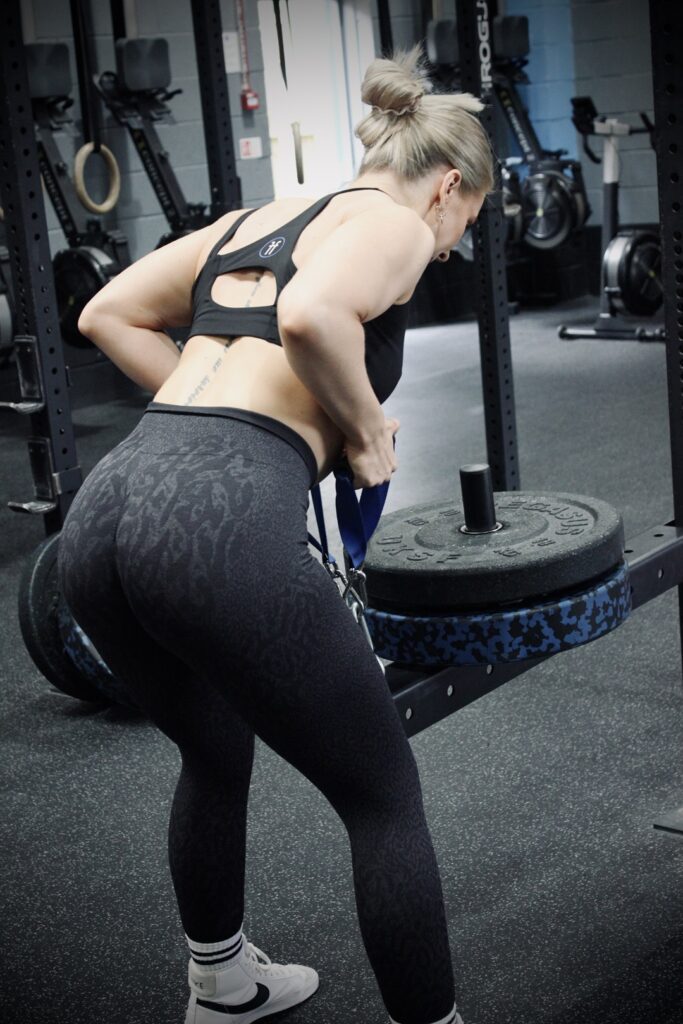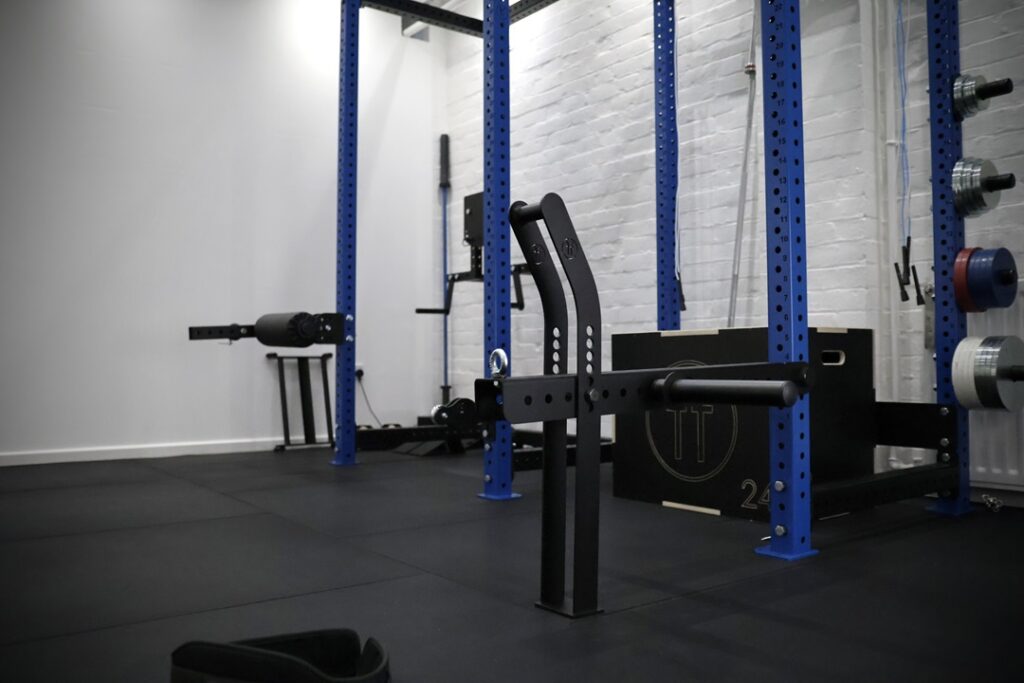Why Every Home Gym Needs a Belt Squat Attachment: Benefits and Recommendations

Share This Post
A home gym offers the convenience and comfort of working out on your own schedule, without the commute or waiting for equipment to free up as in a commercial gym. It’s your personal fitness haven, tailored to your preferences and goals. But to truly unlock the potential of your home workout space, you need gym equipment that is versatile, space-efficient, and able to provide a comprehensive exercise regimen.
The Forte Fitness belt squat attachment is a transformative addition to any home and commercial gym setup. This innovative piece of equipment is a great option for those looking to expand their workout variety and intensity without overburdening or overcrowding their space. It’s designed to offer optimal versatility, allowing you to perform a range of lower body exercises that typically require heavy machines.
With a belt squat attachment, you can engage in an intense leg workout, targeting quads and glutes while minimising the strain on your back and spine – a common concern for those engaging in traditional squats and suffering from back pain.
Whether you’re a seasoned athlete or someone just looking to step up their fitness game, a belt squat attachment provides several benefits. It’s a fantastic solution for home gym enthusiasts seeking to enhance their exercise routine without access to a commercial gym. Let’s delve into why the belt squat attachment is becoming an essential piece of home gym equipment and how you can benefit from adding one to your setup.
The Fundamentals of a Belt Squat

The belt squat is a strength exercise that allows you to train your lower body without placing a load on your upper body. This exercise involves the use of a specialised belt squat rack attachment, which is designed to secure around the lifter’s waist and connect to weights resting on the ground. Unlike traditional squats that require you to rest a barbell on your shoulders, the belt squat places the emphasis directly on your legs and hips, mitigating the load on your spine and shoulders.
The mechanics of performing a squat with this attachment are straightforward yet effective. Once the attachment is set up on the rack, you just need to connect to it through a carabiner that’s attached to a belt secured around your hips. As you squat down, the weights provide resistance without the compression forces on your back that are typical of a regular back squat. This setup allows for extra load without involving the upper body, and is ideal to isolate and develop strength and flexibility in the hips, thighs, and glutes.
There are many benefits of using a belt squat over traditional squats. Primarily, the belt squat attachment is designed to reduce the risk of injury and strain associated with heavy back squats. It’s a safer alternative for those with back issues, or for lifters who are recovering from upper body injuries but still want to train their lower body. Additionally, belt squats can help athletes focus on leg drive and hip extension, which are essential for power generation in various sports. It also allows athletes to maintain training intensity without overstressing their upper body, which can lead to better overall muscle balance and postural alignment. For anyone looking to focus their exercise on the lower body without compromising or fatiguing the upper body, the belt squat is an invaluable addition to their home gym arsenal.
How to set up a Belt Squat Attachment in Your Home Gym
Setting up a belt squat attachment in your home gym is a simple process that will bring significant benefits. The attachment generally includes a pin designed to fit various weight plates, and hitch pins and bolts to fit to your rack.

You can attach this system to your rig or power rack, making it a versatile piece of equipment for home and commercial gyms of any size. Its compatibility with various setups means it can be integrated into any footprint area, ensuring even those with limited space can take advantage of this effective exercise method.
When planning the setup, consider the space around the designated area in your gym, to ensure there’s enough room to perform the squats with a full range of motion. The belt squat attachment is engineered to fit seamlessly with most squat stands and power racks, highlighting its universal design tailored for home use. This compatibility factor allows for a straightforward installation process, making it a practical solution for enhancing your home gym without requiring modifications or additional equipment.
The Versatility of a Rack Attachment in Squat Exercises
A squat rack is an essential component of any serious strength-training regimen that involves squatting, and the addition of rack attachments can significantly expand its functionality. Rack attachments, like the belt squat, leverage the stability and structure of your squat rack to add a diverse range of exercises to your workout routine. This versatile piece can be adjusted to various heights and positions, accommodating a wide array of squatting styles and other exercises.
The integration of a belt squat attachment with your existing rack doesn’t just add value to your squats; it can also enhance the capability of performing other exercises such as deadlifts and rows. You can switch between different workouts quickly, making the most out of the time you spend in your home gym.

The adjustability of these attachments means they can be tailored to different user heights and preferences, ensuring that everyone from beginners to seasoned athletes can use them with ease. The belt squat attachment, in particular, is a testament to the adaptability and resourcefulness of modern home gym equipment, allowing for an impressive variety of exercises within a compact space.
Why the Belt Squat Rack Attachment is Essential for Squatting
Squatting with a belt squat rack attachment offers a series of benefits that can improve your training while protecting your body from injury. Designed with the user’s safety and comfort in mind, the belt squat attachment helps to alleviate spinal compression, a common issue associated with traditional back squatting methods. By redirecting the load to the hips and legs rather than the lower back, athletes can effectively target the desired muscle groups without putting unnecessary stress on the back. This is particularly beneficial for those with pre-existing back issues or for athletes who are at a higher risk of injury due to the intense nature of their training regimes.
The belt squat attachment is designed to facilitate a natural squatting motion, allowing for a greater range of movement while keeping the spine in a neutral position. This can lead to improved posture and strength in the core and lower body. It’s an athlete-suitable addition to any training program, providing the intensity of a traditional squat workout without the associated risks. For anyone looking to maintain a strong and healthy back, integrating a belt squat attachment into their workout routine is an essential step.
Maximising Space with a Squat Rack: The Role of the Belt Squat
In the world of home fitness, space is a premium commodity. A squat rack with a belt squat attachment is a space-saving solution that brings the efficiency of a full gym’s worth of equipment into the convenience of your home, garage, or garage gym. The compact design of the belt squat attachment means that it can be added and easily stored to your existing squat rack without taking up additional room. This adaptability makes it an excellent fit for home gyms, where maximising the utility of space is crucial.
The benefit of incorporating a squat rack into your home gym setup goes beyond just squats. It serves as a central hub for a variety of exercises, enabling you to perform a wide range of strength training routines in one station. From leg workouts to full-body conditioning, the squat rack becomes an all-in-one workout station with the inclusion of a belt squat attachment. For those looking to enrich their exercise regimen without expanding their gym’s footprint, this combination is an efficient and effective solution. It transforms any home gym into a multifunctional fitness environment, providing a comprehensive workout experience in the comfort of your own space.
Advantages of adding a Belt Squat attachment to your Power Rack

The combination of a belt squat attachment with a power rack is what truly transforms your home gym into a magical place for workouts. These attachments are designed to be compatible with the sturdy frame of a power rack, enabling users to perform belt squats with confidence, knowing they’re supported by a stable structure. This compatibility not only enhances safety during workouts but also increases the range of potential exercises. Whether you’re a beginner or an experienced lifter, incorporating a belt squat attachment into your power rack setup can open up a new dimension of training possibilities within the familiar confines of your home gym.
The Added Benefits of a Belt Squat Rack Attachment for Home Use
A belt squat rack attachment offers a multitude of benefits for the home gym user, enhancing the quality and effectiveness of workouts without compromising on space or safety. Primarily, this attachment allows for a targeted lower body workout, focusing on the leg muscles with a precision that free squats can’t match. This focused leg workout is essential for those aiming to increase muscle mass, improve functional strength, or enhance athletic performance. The design of the belt squat attachment helps to alleviate pressure on the spine, making it a safer alternative for people with back concerns and a suitable tool for athletes who require rigorous training regimens without risking spinal health.
The home use of a belt squat rack attachment means that workouts can be tailored to individual needs, schedules, and fitness levels. It’s a powerful way to add intensity to a leg workout while ensuring that other muscle groups are not overexerted. This can be particularly beneficial for athletes in recovery who need to maintain their lower body strength without engaging in full-body exercises that could potentially exacerbate injuries.
Conclusion and Recommendations
In conclusion, the belt squat attachment stands out as an essential component for any home gym, offering a safe and effective way to enhance lower body workouts while sparing the spine from heavy weights. Throughout this guide, we’ve explored the advantages, space-saving benefits, and the versatility that a belt squat rack attachment brings to your home workout environment. It allows you to target different muscle groups with precision, suitable for athletes and fitness enthusiasts alike who are keen on elevating their training routines.
For those ready to introduce a belt squat attachment into their gym, consider the variety of exercises it unlocks, from leg workouts to full-body regimens when paired with add-ons like the jammer attachment. It seamlessly integrates into your existing setup, making it a smart and practical upgrade to your home fitness arsenal.
Check out Forte-Fitness’s belt squat attachment, made in the UK from high quality materials. The belt squat attachment is designed for the rigorous use of heavy weights while maintaining a small footprint in your home gym. It’s the perfect time to take your home gym to the next level with Forte-Fitness’s innovative equipment, known for its durability and compatibility with a wide range of exercises.
Be The First To Know
Subscribe for 10% OFF on first order
See our full Terms and Conditions and Privacy Policy and Cookie Policy to find out more.

We believe that great movement and strength should be the foundation for any training methodology. We make fitness equipment that is great for a huge range of fitness and movement styles. Our goal is to help you train frequently and safely for many years.




More To Explore
The Ultimate Guide to Skipping: Unlocking Strength, Balance, and Stress Relief with a flow rope
Flow rope training is a dynamic workout method that involves using a thick braided rope to create rhythmic, fluid movements. Unlike traditional jump rope exercises, a flow rope workout doesn’t necessarily require jumping. Instead, you move with the rope rather than against it, making it an excellent workout for balance, coordination, and relaxation. Popular among
The Benefits of Training with a Weighted Vest: Boost Your Strength and Endurance
Integrating a weighted vest into workout routines is an increasingly popular fitness strategy aimed at enhancing the effectiveness of various exercises. This comprehensive guide examines how weighted vests can significantly boost physical fitness by increasing the intensity of workouts, details the potential risks, and offers insights into maximising benefits while minimising potential drawbacks. What is